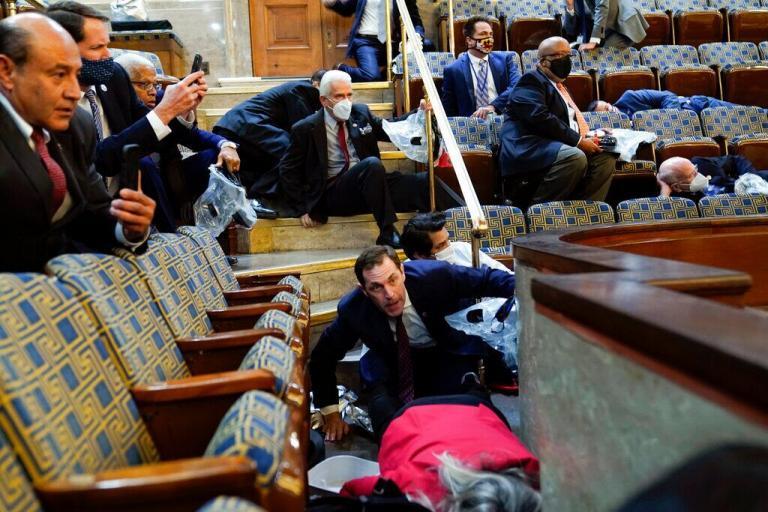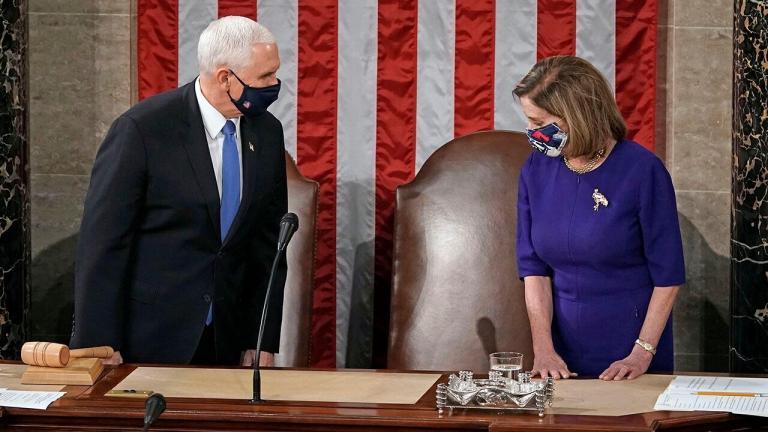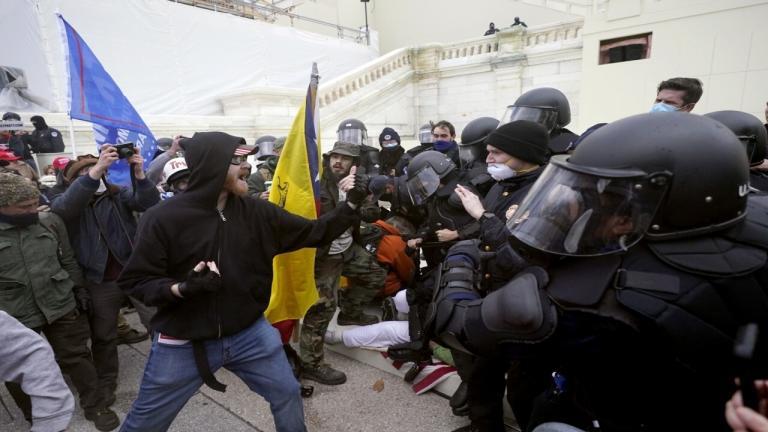This is because, despite the headlines, real factory orders and manufacturing output likely fell in June.
Let’s start with the basics. The Commerce Department said on Tuesday that factory orders climbed 1.5 percent in June after jumping 2.3 percent in May. Economists polled by Reuters had forecast factory orders increasing 08 percent, according to Econoday.
“Solid U.S. factory orders, business spending on equipment point to enduring manufacturing strength,” a Reuters headline declared.
President Joe Biden and Mayor of New Orleans LaToya Cantrell take a tour of the Carrollton water treatment plant May 6, 2021, in New Orleans, Louisiana. (Brendan Smialowski / AFP)
New orders for manufactured nondurable goods–which includes goods, pharmaceuticals, and clothing–increased $5.1 billion or 2.1 percent to $248.1 billion.
Durable-goods orders rose 0.9 percent, a tick above the 0.8 percent gain initially reported by the U.S. government. In dollar terms, orders rose $2.3 billion to $257.9 billion.
For the past decade, rising factory orders have typically indicated rising demand and rising output. More American goods were being purchased.
But factory orders are measured in nominal dollars. If inflation is rising rapidly, a rise in the dollar-denominated value of goods purchased may simply be reflecting rising prices. Instead of purchasing more goods, consumers and businesses may just be paying more for the products they buy.
That could be problematic for businesses and investors if they mistake inflation-driven sales growth for real growth. So far, little of the reporting or commentary on nominal dollar reports has focused on the risk of an inflation head fake, likely because it has been so long since we last experienced high inflation.
An auto worker works on the assembly line at the Ford Dearborn Truck Plant on September 27, 2018, in Dearborn, Michigan. The Ford Rouge Plant is America’s longest continuously operating auto plant. The factory produced Eagle Boats during WWI and currently produces the Ford F-150 pickup truck. (Bill Pugliano/Getty Images)
The Bureau of Labor Statistics’ (BLS) Producer Price Index (PPI) showed that prices paid to businesses for goods rose 1 percent in June. The prices paid to suppliers of materials used in nondurable goods rose 3.6 percent in both June and May. For durable goods, the prices of materials rose 3.3 in June and 8.7 in May.
The “final demand” prices received by businesses for durable goods jumped 4.9 percent in June. The producer price index for nondurables less food and energy rose 2.9 percent.
Steve Hanke, a professor of applied economics at the Johns Hopkins University who served on President Reagan’s Council of Economic Advisers, points me to the BLS’s measure of processed goods for intermediate demand, another part of the PPI that also indicates inflation outpacing factory orders.
“If we look at the Bureau of Labor Statistics’ ‘Processed Goods for Intermediate Demand’ price index, we observe that in June, that index shot up by 1.9 percent, an inflation rate that exceeds the 1.5 percent increase in factory orders for June,” Hanke said. “This suggests that, when measured in terms of the quantity of output, factory orders in June declined a bit. So, it looks like the ‘enduring manufacturing strength’ story doesn’t seem to hold much water.”
An old factory stands along a road on April 09, 2021, in Pawtucket, Rhode Island. Rhode Island consistently ranks as one of the worst states in America for the condition of its infrastructure with an estimated 24% of its roads in poor condition and 23% of its bridges standing structurally deficient. President Joe Biden has recently unveiled a $2 trillion jobs, infrastructure and green energy plan called the American Jobs Plan. Many economists, engineers, and politicians believe that infrastructure in the United Sates is lagging behind China and other competitive nations. (Spencer Platt/Getty Images)
In other words, prices for manufactured goods appear to be advancing faster than orders. That means that the “better than expected” numbers for June may not be so great after all. Factory orders appear to be contracting in inflation adjusted terms.
Originally found on Breitbart Read More







